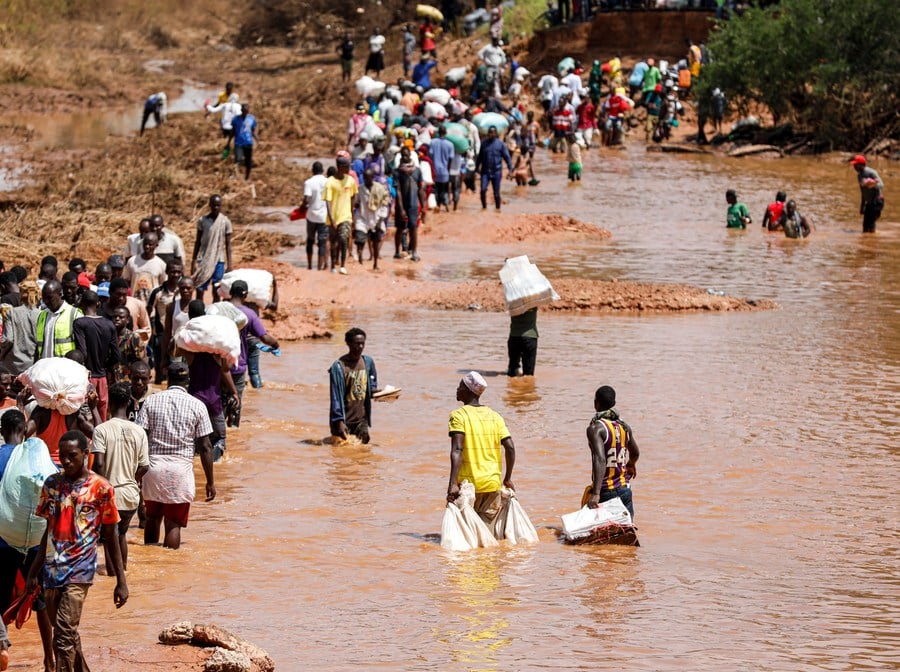Kenya Meteorological Department on Sunday cautioned Kenyans to brace themselves for higher rainfall in July likely to turn into hailstorms in August.
The department explained that the July rainfall was not unusual and that it was caused by the interaction of cold air from the east and warm air from the west.

“It is not unusual to experience rains in July in Kenya. This occurs when cold air from central and eastern regions, including Nairobi, interacts with warm moist air from the west.
“The warm air rises over the cold air, leading to heavy advective rains,” Kenya Met explained.
Kenya Meteorological Department boss David Gikungu addressing the media in November 2023 (left) and rains along Thika Road. DPPS NTSA
The interaction between warm and cold air grows more intense transforming into hailstorms as the month progresses to August and September.

“As we approach August and early September, this interaction can cause hailstorms, which are often mistaken for snow. This phenomenon is similar to the formation of a warm front,” added Kenya Met.
“When active weather systems from the west push warm, moist air towards these cooler regions, these weather patterns are expected.”
According to Kenya Met’s mapping, rainfall of up to 180mm will be experienced in Western region counties as well as along the coastline.
Other areas including lower eastern and the northern areas are likely to experience moderate to lower rainfall.
Yesterday, another forecast by Kenya Met indicated that eight regions among them Nairobi will experience intense rainfall between 0900hrs July 7, and 0900hrs July 8.
The listed areas include; Kiambu, Murang’a, Nyandarua, Nandi, Laikipia, Trans Nzoia, Narok, and Uasin Gishu. The rainfall was rated above 25mm.

In Nairobi, however, the rains will be expected to be below 20mm.
Machakos, Meru, Migori, Homa Bay, Nyamira, Bungoma and Busia are also expected to experience a similar level of rainfall.
“Intermittent cool and cloudy conditions are expected over some parts of the Highlands East and West of the Rift Valley, the South-eastern lowlands and the Rift Valley,” the forecast showed.
“Rainfall is expected over the Highlands West of the Rift Valley, the Lake Victoria Basin, the Rift Valley and North-western Kenya.”




